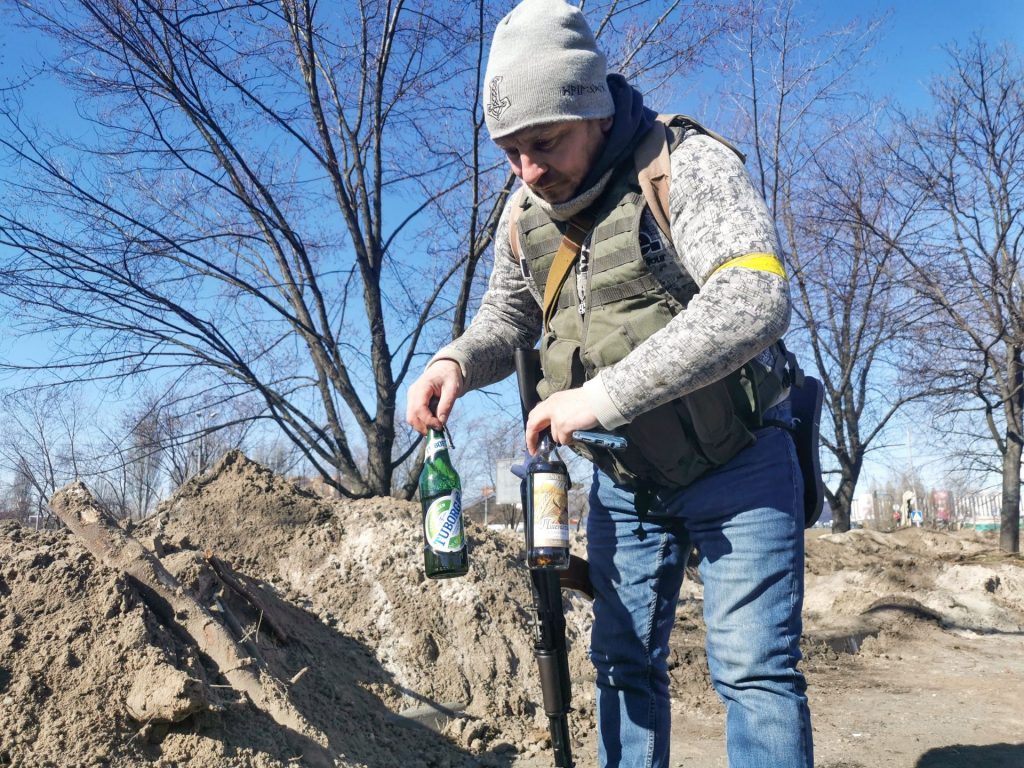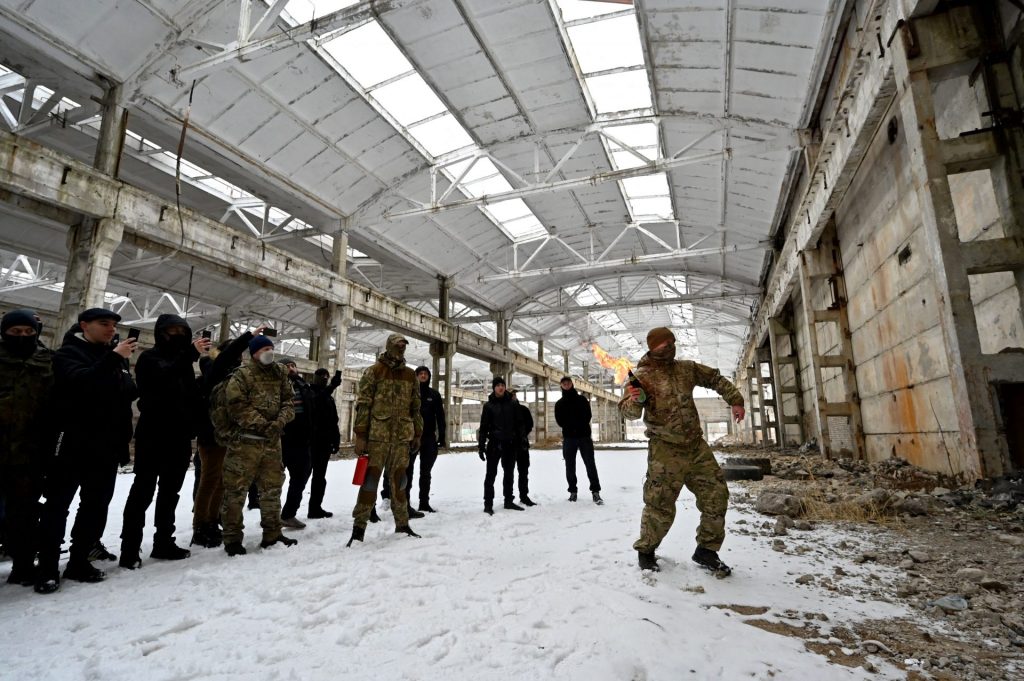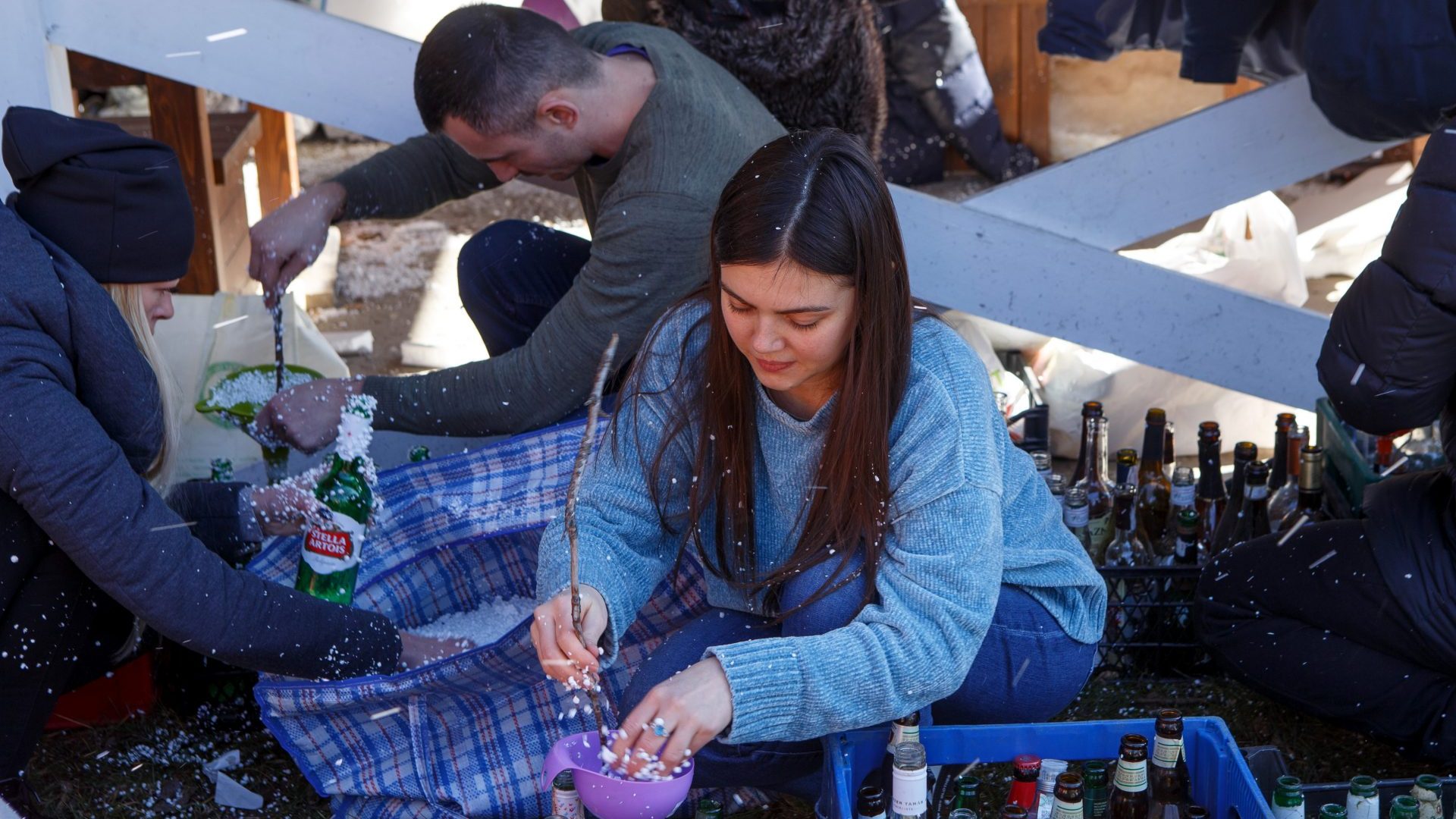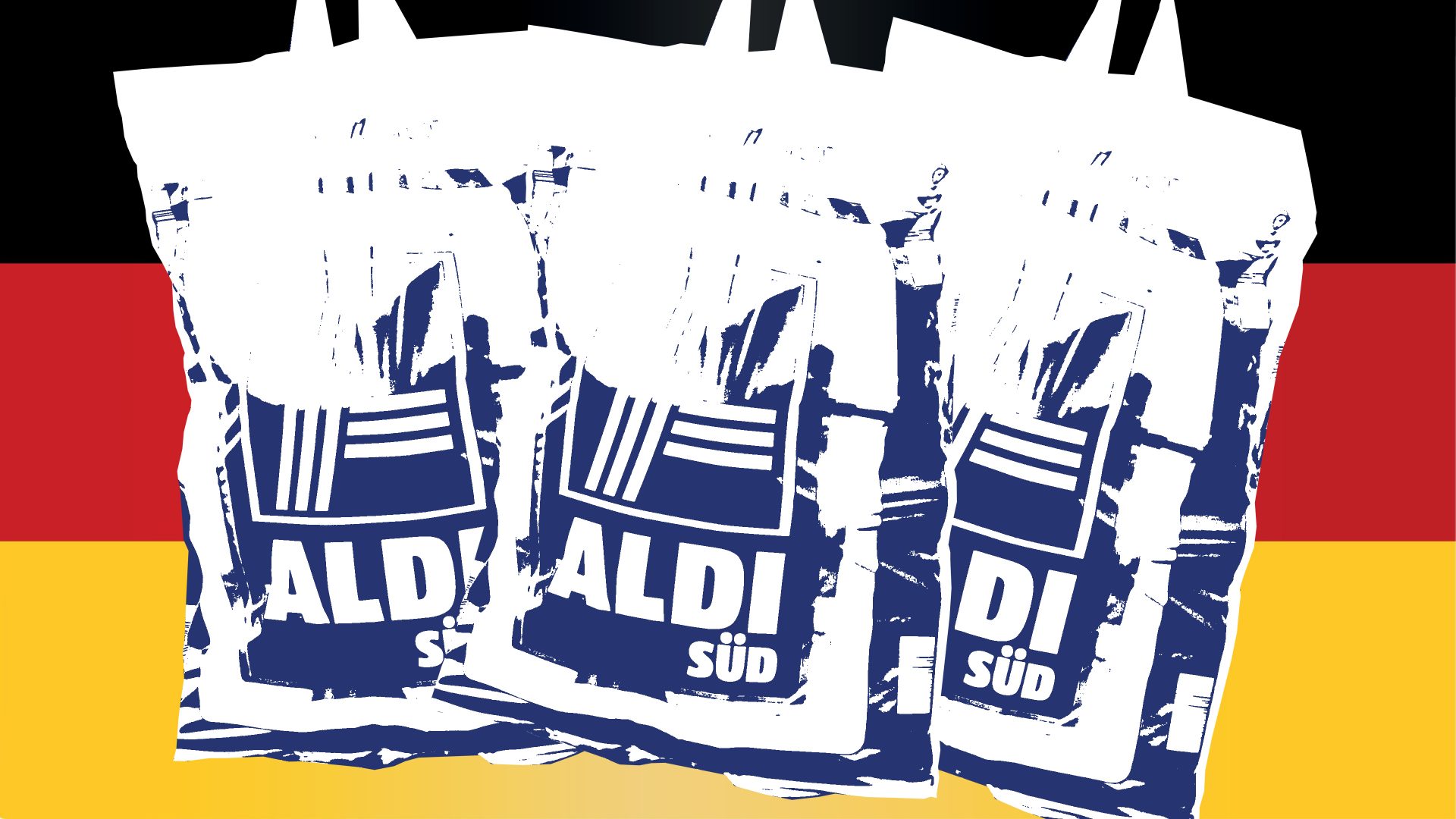“Make Molotov cocktails, neutralise the occupier!,” tweeted Ukraine’s Ministry of Defence on the morning of February 25 as Vladimir Putin’s army closed in on the capital of Kyiv.
Western media immediately latched on to the call as, at best, a stark symbol of the striking asymmetry of this conflict or, at worst, a crude novelty. The Independent’s headline focused on “Grannies armed with Molotov cocktails”. France24 found a brewery which had switched from beer production to making the primitive bombs (the brewery, Pravda, already made a popular beer called Putin khuylo – roughly, ‘Putin is a dickhead’).
Often used in riots and uprisings and, as such, seen as a symbol of revolution, the Molotov cocktail was, however, born out of more conventional warfare. The improvised incendiary weapons, consisting of flammable liquid put into glass bottles, were first used under their famous name in the Winter War, also known as the First Soviet-Finnish War, which took place from November 1939 to March 1940 and was sparked by the former’s aggressive invasion of the latter.
That they take their name from Vyacheslav Molotov, the Soviet Union’s minister of foreign affairs, is well-known. Perhaps less is that – like the Putin-themed beer mentioned above – it was meant as a mockery, Molotov’s eponymous deal with Nazi Germany’s Joachim von Ribbentrop not only seeing Poland divided between the two countries but also dragging Finland into the Soviet “sphere of influence”.

Molotov was widely pilloried for his propaganda around the attacks on Finland, in particular his dubious claims on Soviet state radio that bombing missions over the country were actually humanitarian food deliveries for their starving neighbours (not a million miles from Putin’s claims Russian troops in Ukraine were on a “peacekeeping” mission to the so-called “People’s Republics” of Donetsk and Luhansk). The Finns, who were not starving, dubbed the Soviet cluster bombs “Molotov bread baskets” and gave their home-made bombs the name “Molotov cocktail”, as “a drink to go with the food”. Molotov himself was said to have hated the name, particularly as it later became the catch-all term for such weapons as tensions later flared elsewhere in the Soviet orbit.
Primarily intended to set targets ablaze rather than instantly destroy them, the Molotov cocktail is a breakable glass bottle containing a flammable substance such as petrol and usually a source of ignition, like a burning cloth, held in place by the bottle’s stopper. The wick itself is usually soaked in alcohol or kerosene. When the bottle smashes on impact, the ensuing cloud of petrol droplets and vapour ignites, causing an immediate fireball followed by a raging fire as the fuel burns.
But the Winter War was not their first use in the battlefield. In the Spanish Civil War just three years earlier Franco is said to have ordered his Nationalist troops to use them against Soviet tanks. And many were made by people in Britain in the 1940s as the threat of a Nazi invasion loomed (although they have been illegal in Britain since the Explosive Substances Act of 1883, prosecuting anyone who “unlawfully and maliciously causes by any explosive substance an explosion of a nature likely to endanger life or to cause serious injury to property”. The act was passed by Gladstone’s Liberal government at the height of the Fenian dynamite campaign.)
It was in 1936 that Franco first ordered his troops to use the weapon against Soviet T-26 tanks supporting the Republicans in a failed assault on the Nationalist stronghold of Seseña, near Toledo, 40km south of Madrid. Tom Wintringham, a veteran of the International Brigades, later set out their usage in a Picture Post article of 1940 entitled The Lessons of Spain. Setting out their contruction roughly, he warned: “Do not play with these things. They are highly dangerous.”

Wintringham’s article became a user manual in Britain in 1940 when, with the prospect of immediate invasion not unrealistic, the makeshift defence weapon gripped the imagination of a swathe of the British public. Their use in Spain was widely reported, though it was Finland which Edmund Ironside, chief of the Imperial General Staff during the first year of the war, had on his mind in 1940 when he addressed the Home Guard on the Molotov Cocktail, “quite an effective thing”. He advised: “Out of the top windows is the place to drop these things on the tank as it passes the block. It may only stop it for two minutes there, but it will be quite effective.”
Success was mixed. As Stephen Cullen wrote in his 2016 book, In Search of the Real Dad’s Army: The Home Guard and the Defence of the United Kingdom 1940-1944: “General Ironside’s picture of a conveniently lone German tank stopped by a road block being bombarded at close range by LDV [local defence volunteers] petrol bombs, ignore the reality that German armour would be accompanied by infantry trained to neutralise just such a threat. Finnish successes against the Red Army were also a result of poor Soviet infantry tactics… Neither the Spanish, nor the Finnish case, was, then, a good model for Britain in 1940.”
Years later, in Northern Ireland, Molotov cocktails were used by rioting paramilitary groups and protesters against the state, in the form of the police, and were also used to attack houses. And in the Arab Spring they were used both by the protestors – in the Bahraini uprising, protesters used Molotov cocktails against security forces – and against them, as in Egypt, where pro-government forces attacked protesters in Cairo.
In more recent years, though, the Molotov Cocktail has become more symbolic, a shorthand for civil uprising and revolution, an emblem of anarchy, a popular weapon in video games and a handy way for filmmakers to stress a feeling of dystopia (a giant mural of Joaquin Phoenix’s Joker holding a Molotov cocktail appeared on a wall in Lebanon in 2019).
What was less expected, though, was its reemergence in 2022 as a Western-facing democracy’s citizens sought to fend off invasion by another bigger, aggressive neighbour.




